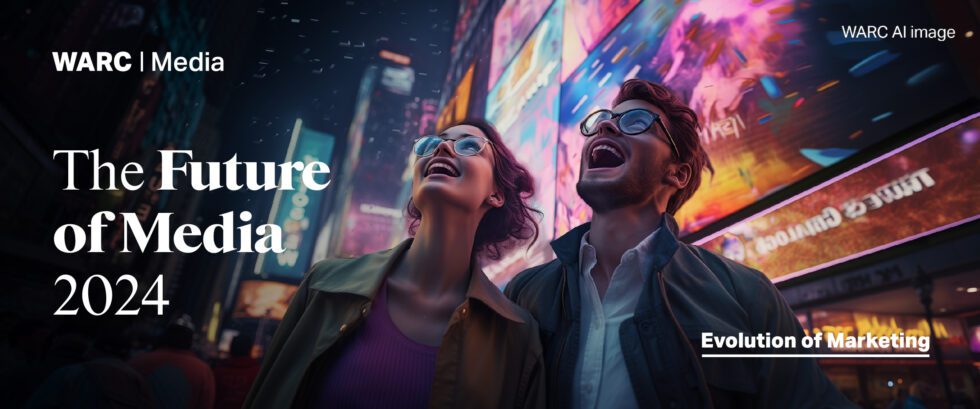What trends can we expect to see in media planning, advertising investment and the entire media ecosystem this year? WARC mentions four key areas in its fresh report The Future of Media 2024.
Predictions for this year are optimistic. Global ad spend is expected to grow at double the rate of last year and exceed $1 trillion for the first time in history, according to WARC. More than half (51.9%) of this astronomical sum will be shared by just five companies - Alibaba, Alphabet, Amazon, Bytedance and Meta. Their advertising revenues will thus increase by 10.7 percent.
"As marketing budgets grow, there is uncertainty about where best to direct media investments, what role artificial intelligence will play in planning, and how to evaluate media quality," says Paul Stringer, WARC's senior editor of Research and Insights, adding the prediction, "Media environments that can offer appropriate guarantees about brand safety will gain extraordinary value."
So what are the key trends according to The Future of Media 2024 report?
1. AI-based advertising solutions are growing but forcing advertisers to compromise
Walled garden" platforms, i.e. closed ecosystems such as Facebook or Google, are increasing their reach and influence in the advertising business thanks to the introduction of new AI tools (Advantage+ from Meta, Performance Max from Google). On the one hand, this is generating excitement among advertisers. According to anecdotal data, these products are helping them save costs and achieve higher returns through automation. Google claims that advertisers are getting 18 percent more conversions on average for the same price. Meta users saw an average 17 percent reduction in acquisition costs and a 32 percent improvement in ad ROI.
On the other hand, there are concerns about the credibility and transparency of AI tools. Working with them requires advertisers to relinquish some control over campaign decision-making. "AI-generated content poses a threat to media quality and brand safety," the report reads. Moreover, the concerns are not just with the tools themselves, but with entire platforms and their growing power.
2. Linear TV viewing continues to decline, but age matters
Although television remains the most trusted medium, consumption of linear broadcasting continues to decline (especially among young people) and this trend has accelerated in the past year. According to WARC data, global spending on linear TV advertising will fall by 5.4 per cent in 2023. Time spent consuming TV fell by an average of only 3 minutes per day last year, and is expected to fall by a further two minutes this year.
"We often hear that linear broadcasting is dead. But people still watch linear broadcasting, and even if they are older, it still represents half of our pie. Budgets need to reflect that,"
says Dave Campanelli, chief investment officer at Horizon Media.
3. Measuring attention at the crossroads
More and more brands and agencies are using attention measurement to assess the quality of creative and media. But WARC says a lack of common standards and substantial evidence is preventing attention measurement from being a legitimate tool. There are also frequent criticisms that it is heavily biased against visual media. "Clearly our industry needs more robust evidence to convince CFOs and procurement departments that low-cost media does not necessarily lead to effectiveness," says Professor Karen Nelson-Field, CEO of Amplified Intelligence.
4. The growth of in-game advertising
Computer games are one of the most popular and widespread forms of entertainment worldwide, but brands have long missed this opportunity. IAB research estimates that games account for just five per cent of sponsors' budgets. However, times are changing and this is due to, among other things, the growing inventory within games. As a result, PwC estimates that video ad revenue will be $91 billion this year, making games the fifth largest channel in terms of ad spend (behind search, SoMe, linear TV and retail media).
Source: mam.cz

